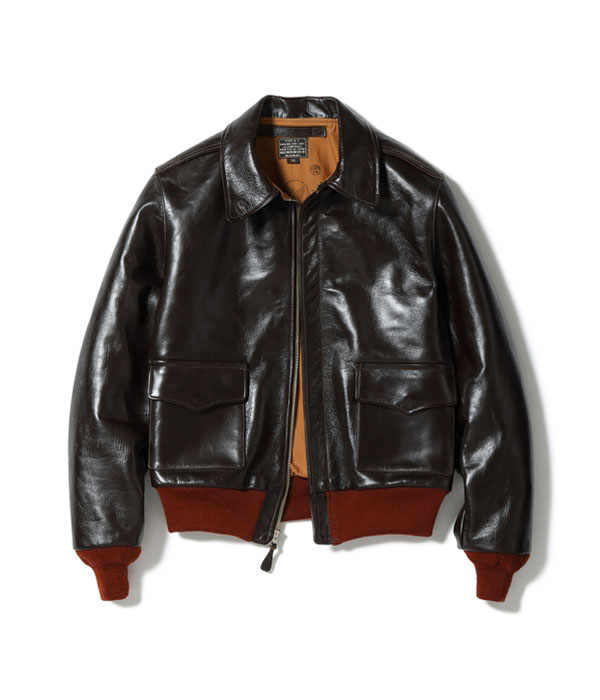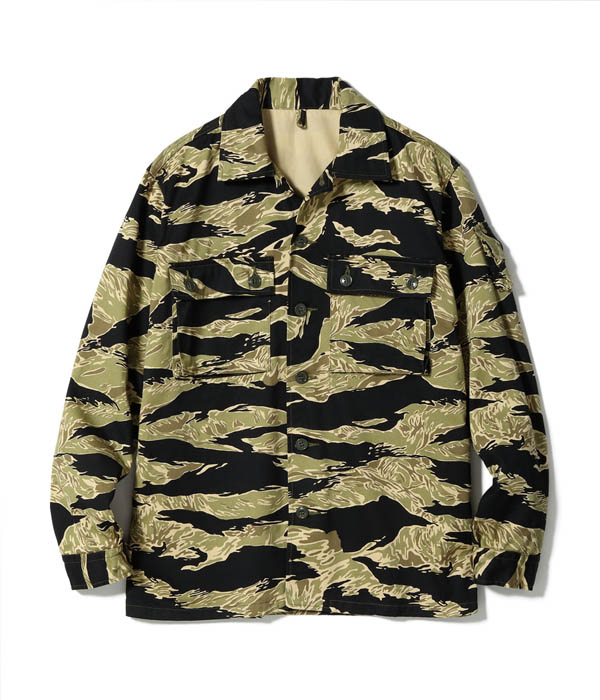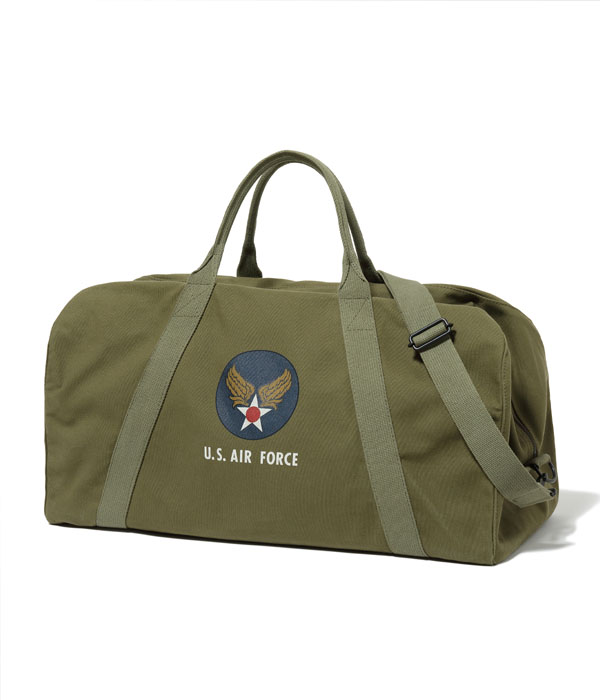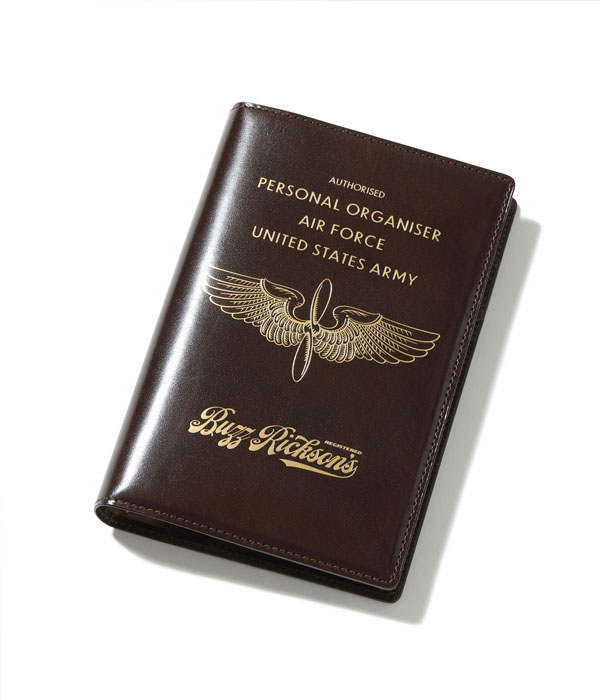Lot No. BR11554 / PEA-COAT “NAVAL CLOTHING FACTORY”
俗に“ピー・コート”と呼ばれるコートの原型は、18世紀には存在していたとも言われている。名称は、オランダ語の“Piijekker(ピーイエッケル)”を英語にした物で“Pii”が粗い毛織り物、“jekker”がジャケットから由来している。ヨーロッパ諸国でもピー・コート型のコートが幾つかの軍で採用されてきたが、今回のこのピー・コートは、アメリカ海軍が下士官用コートとして採用した1910年代のものである。1910年代のピー・コートの特徴は、高密度の分厚いメルトンウール素材を用いていることと、アメリカの国章を表す13個の星が彫刻されたアンカーボタンが付くことである。この13個の星は、1777年にアメリカが合衆国として独立した時の州の数が13であったことに由来している。アメリカ海軍がピー・コートを採用した正確な時期は不明だが、第一次大戦当時の服装規定には既に下士官用コートとしてオーバーコートが掲載されていた。襟が大型なのは海上で作業する際、襟を立てて顔を覆い、強風対策を十分に確保出来るよう設計されている。また、ポケットはスリット式のものが垂直に付けられているが、これは凍えた手を暖めるためのハンド・ウォーマーポケットである。1930年代以降になると生産性やコスト面が見直され、生地の軽量化が進み、13スターボタンも廃止される。
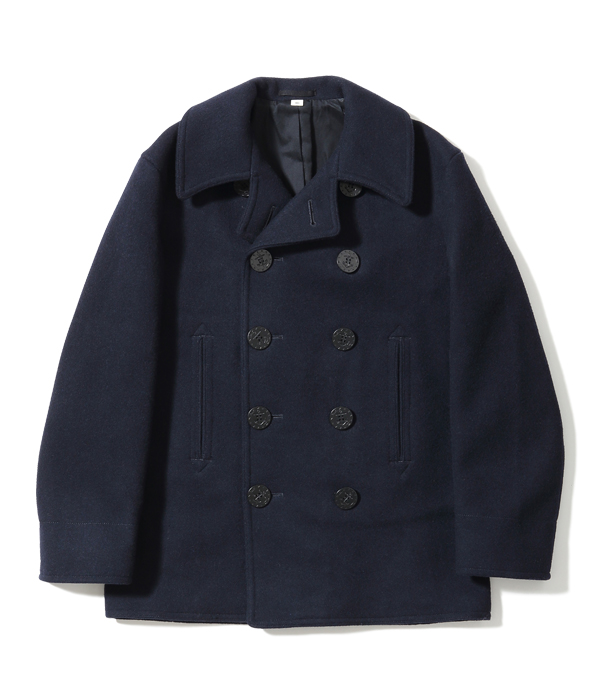
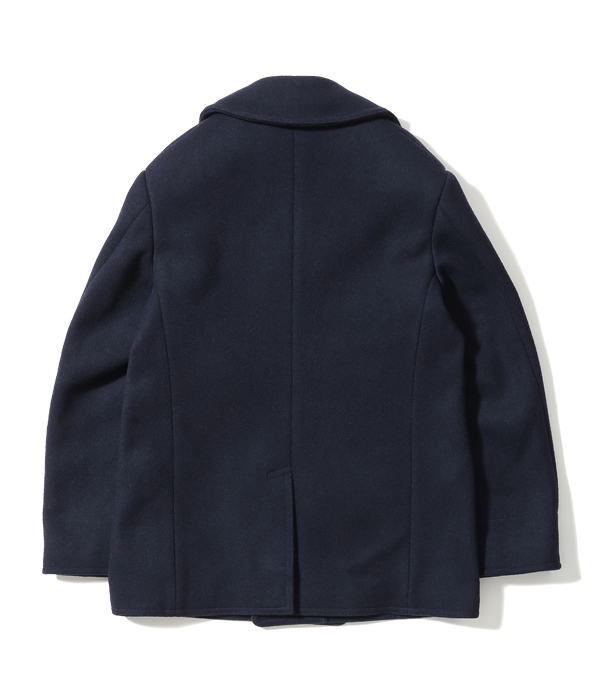
U. S. NAVY
ENLISTED MAN’S OVERCOAT / PEA-COAT “NAVAL CLOTHING FACTORY”
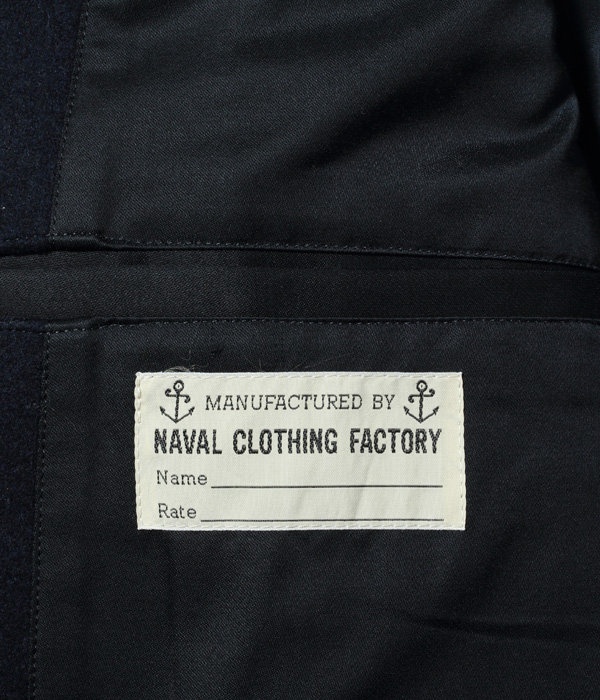
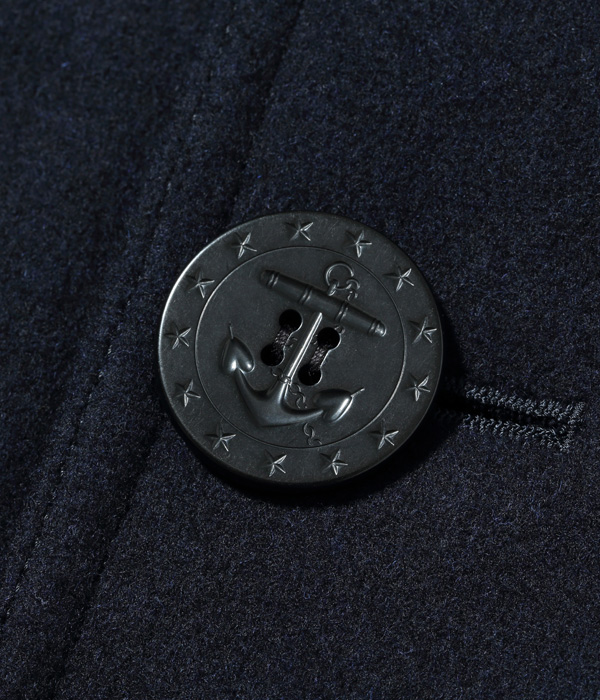
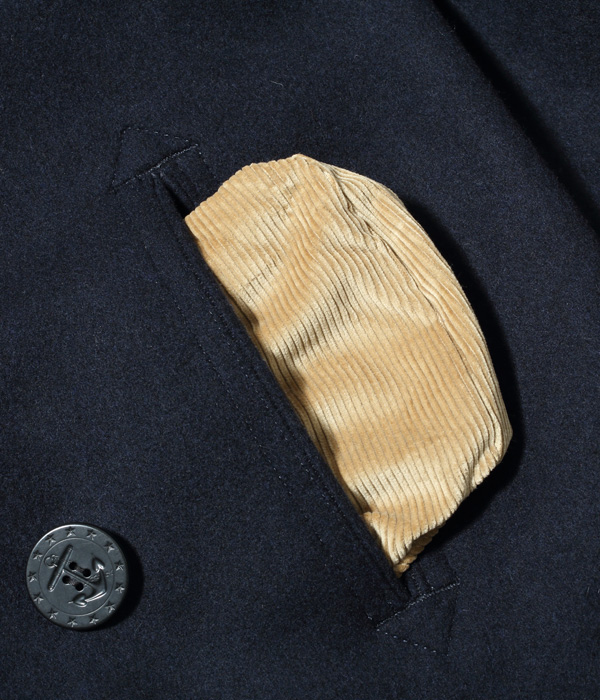
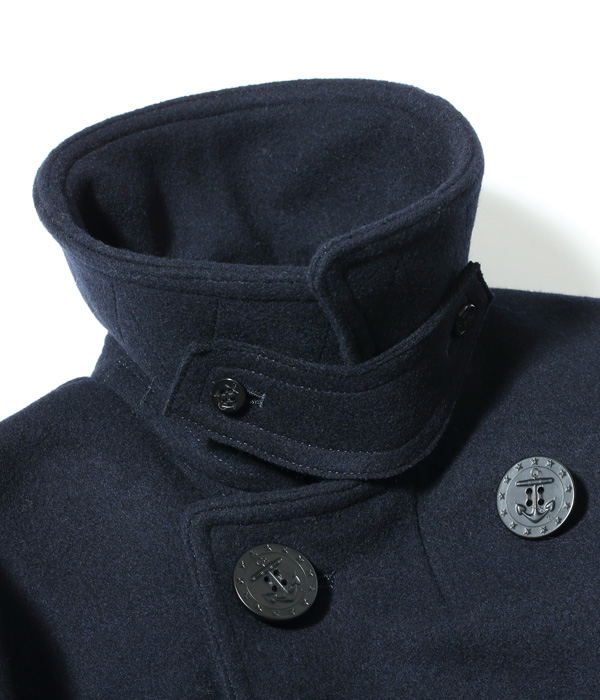
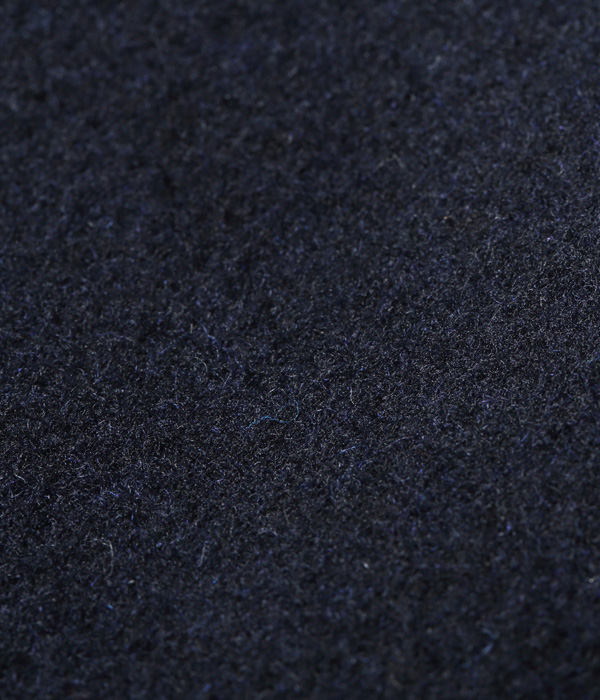

30年代までのピーコートに使用された13スターボタン。ポケット地は保温性のあるコーデュロイ生地を使用している。
BUZZ RICKSON’S
No. BR11554 / PEA-COAT “NAVAL CLOTHING FACTORY”
PRICE : ¥58,300(税込)
SIZE : 34, 36, 38, 40, 42, 44
COLOR : 01) NAVY
MATERIAL : 36 oz. Melton Wool
LINING : Rayon Cotton Satin
POCKET : Cotton Corduroy
BUTTON : Mil Spec Urea (13 Star and Anchor Motief Early Type)
LABEL : Naval Clothing Factory
The original model of the commonly known “pea coat” is said to have existed in the 18th century. The name originated from the Dutch word “piijekker,” in which “pii” referred to coarse woolen item and “jekker” referred to jacket. Pea coat style coats were worn by a number of militaries in European countries. This pea coat is from the 1910s that the U.S. Navy issued to petty officers. Pea coats of the 1910s are characterized by the use of high-density, thick melton wool material and anchor buttons engraved with 13 stars of the seal of the United States. The 13 stars represent the 13 colonies that existed when the United States declared independence in 1777. While it is not known exactly when the U.S. Navy adopted the pea coat, the overcoat was already port of the petty officer dress code during World War I. A large collar was designed so that officers working on the sea can cover their faces with the collar and fully protect their faces from strong winds. In addition, slit-type pockets were attached vertically to serve as hand warmer pockets to warm up cold hands. From the 1930s and onwards, as a result of reviewing productivity and cost, lighter fabrics were utilized, and the 13-star buttons were eliminated.
Topics
